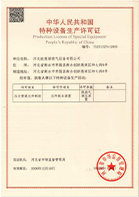
Dec . 04, 2024 16:22
Back to list
Understanding the Functionality and Applications of Pressure Reducing Regulators in Various Industries
Understanding Pressure Reducing Regulators Function, Applications, and Benefits
Pressure reducing regulators (PRRs) are critical components in various industrial, commercial, and residential applications where managing gas or liquid pressure is essential. These devices ensure that the pressure delivered to a system remains within a safe and predetermined range, protecting equipment and enhancing safety.
The fundamental role of a pressure reducing regulator is to decrease and stabilize the pressure from a higher inlet pressure to a lower outlet pressure. This is crucial, as many systems, such as boilers, gas appliances, and pneumatic tools, require specific pressure levels for safe and efficient operation. Without a pressure reducing regulator, fluctuations can lead to equipment failure or inefficient performance, resulting in increased operational costs and potential hazards.
Generally, PRRs consist of a few key components an inlet diaphragm, an outlet diaphragm, a spring, and an adjusting screw. When the high-pressure gas enters the regulator, it acts on the inlet diaphragm, which in turn compresses the spring. This mechanism allows the outlet pressure to remain constant with any fluctuation in inlet pressure. By adjusting the tension on the spring using the adjusting screw, operators can set the desired outlet pressure for their particular application.
These regulators find widespread use in various fields. In the medical sector, for example, PRRs regulate the pressure of gases supplied to patients, ensuring they receive a safe and accurate flow of oxygen or other medical gases. In the food and beverage industry, these regulators maintain the pressure for gas used in carbonation processes, ensuring product quality and consistency. Similarly, in industrial settings, PRRs control gas flow in manufacturing processes and laboratory applications, ensuring reliable equipment performance.
pressure reducing regulators

One of the significant benefits of using pressure reducing regulators is improved safety. By maintaining a stable pressure within specified limits, they prevent over-pressurization, which can lead to catastrophic failures in pipelines, tanks, or other equipment. Additionally, they significantly reduce the risk of leaks, which can pose serious safety hazards in environments dealing with combustible gases.
Moreover, PRRs enhance efficiency. By providing the correct pressure required for various processes, they help optimize energy use. Systems operating at optimal pressure levels consume less power, which translates to lower utility costs. In the long run, this not only reduces operational expenses but also contributes to environmental sustainability by minimizing energy waste.
In terms of maintenance, pressure reducing regulators are generally low-maintenance devices. However, routine inspections and proper installation are crucial for ensuring long-term reliability. Operators should monitor for signs of wear, leakage, or reduced performance to avert potential issues before they escalate.
In conclusion, pressure reducing regulators play an indispensable role across various industries by managing and stabilizing pressure levels effectively. Their ability to improve safety, enhance efficiency, and reduce operational costs makes them a vital component in any system that relies on fluid or gas delivery. As technology advances, we can expect to see even more efficient designs and applications of pressure reducing regulators, further solidifying their importance in modern engineering and manufacturing processes. For anyone involved in maintaining or operating systems that utilize gases or fluids, a thorough understanding of pressure reducing regulators is essential to ensure safety, efficiency, and compliance with industry standards.
Latest news
-
Safety Valve Spring-Loaded Design Overpressure ProtectionNewsJul.25,2025
-
Precision Voltage Regulator AC5 Accuracy Grade PerformanceNewsJul.25,2025
-
Natural Gas Pressure Regulating Skid Industrial Pipeline ApplicationsNewsJul.25,2025
-
Natural Gas Filter Stainless Steel Mesh Element DesignNewsJul.25,2025
-
Gas Pressure Regulator Valve Direct-Acting Spring-Loaded DesignNewsJul.25,2025
-
Decompression Equipment Multi-Stage Heat Exchange System DesignNewsJul.25,2025

